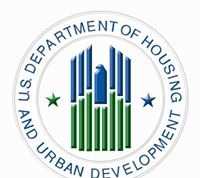USGS Is a Critical Partner to Washington in Preparing for and Responding to Natural Disasters and in Watershed Restoration
Cantwell Calls for Strengthening USGS Programs Essential to Informing Decisions and Protecting People from Volcanoes, Earthquakes, Tsunamis and Landslides
Read her opening statement here.
WASHINGTON, D.C. – (RealEstateRama) — Ranking Member of the Senate Energy and Natural Resources Committee U.S. Senator Maria Cantwell (D-Wash.) called for strengthening programs at the U.S. Geological Survey (USGS) critical to informing decisions, ensuring public safety and monitoring natural hazards such as volcanoes, landslides and earthquakes that cause tsunamis. The state of Washington is especially prone to many of these natural disasters.
Volcanoes
Washington has five volcanoes considered “high” or “very high” risk: Glacier Peak, Mount Adams, Mount Baker, Mount Rainier and Mount St. Helens. Many of these high-risk volcanoes lack sufficient monitoring equipment for detecting volcanic activity, which is needed to provide early warning to local communities. Both Mount Baker and Glacier Peak, “very high” threat volcanoes, each have only one seismometer of the five needed. This Congress, Sen. Cantwell introduced S. 2056, the National Early Warning Monitoring System Act, with Sen. Murkowski. The bill would create an early warning program for high-risk volcanoes, like Mount Baker and Glacier Peak, and would improve coordination among agencies to help protect lives and property.
Earthquakes and Tsunamis
Washington state is geologically active and prone to earthquakes. Earthquake early warning is critical to ensuring public safety and minimizing loss of life. Early warning requires rapid detection of earthquakes before they begin and immediate communication of the risks to those in harm’s way. “That is why we continue to advocate for the Earthquake Early Warning System—because it would save lives and billions of dollars,” Sen. Cantwell said. Sen. Cantwell is a strong supporter of the Earthquake Early Warning Program being tested by the USGS, the University of Washington and Cal Tech, and today pressed the USGS to rapidly complete implementation of the early warning system.
Along the coast of Washington, Oregon and California lies the Cascadia subduction zone. Past earthquakes produced by the Cascadia subduction zone have also produced catastrophic tsunamis, most recently in 1700. The fault could produce a significant earthquake in the next 50 years, which, along with a corresponding tsunami, would impact millions of people in Washington, Oregon and California.
“And, that is also why we introduced the Tsunami Warning, Education and Research Act (S. 533) last year. This bill passed the Senate last year and would require the USGS to work with the NOAA Tsunami Program,” Sen. Cantwell said. The bill would strengthen NOAA’s tsunami warning system and advance new research related to improving tsunami detection, forecasting, notification and response. Sen. Cantwell noted that such a tsunami would be devastating to the state of Washington and the nation, asking: “What is the USGS doing to understand the threat posed by the Cascadia subduction zone?”
Dr. Kimball of the USGS responded, “Within USGS, we do have a priority activity to begin looking at the Cascadia subduction zone. There is more to be done to understand the mechanics. … [But] perhaps a more important aspect is to make sure individuals understand the potential, understand the true probability of an event and what to do should that kind of event occur.”
Recently, Sen. Cantwell held a roundtable on tsunami preparedness in Long Beach, Washington, and highlighted that a there will be a drill on tsunami preparedness two months from now in the Northwest.
Regarding preparedness, Sen. Cantwell stated: “we need to keep doing work to make this plan a reality at the federal level. … One of the largest economies in the world – the West Coast economy – will be greatly impacted by this, so I think we need to keep ‘knitting it’ together.”
Dr. Kimball explained that the USGS has been working closely with the seismic community “to help knit together information technology, infrastructure needs and public awareness.”
Sen. Cantwell asked Dr. John Vidale of the Pacific Northwest Seismic Network about ensuring local communities have all the data they need to build resilient evacuation structures in the event of a Cascadia earthquake and tsunami.
Dr. Vidale responded: “There is continuing study about how high we have to evacuate and how often. Next we have a magnitude-nine project at the University of Washington trying to probabilistically estimate what people have to look out for. … It’s just a challenge to find the funding for these evacuation structures. We know it’s a problem, and we know there people who are going to be stuck, but these buildings cost a lot of money.”
Landslides and LIDAR
The Pacific Northwest is prone to landslides due to heavy rainfall, its unique geology and the dynamic topography of the region. In March 2014, one of the largest landslides in state history occurred in a small community between Arlington and Darrington, causing 43 deaths and the destruction of destroying 49 homes and structures. The direct costs of this landslide totaled more than $80 million.
“I want to mention the terrible tragedy of the Oso Landslide that occurred in March of 2014, which caused 43 deaths. That mudslide was so devastating and we still feel the loss of life. And we thank so many of our first responders who responded to that. The USGS provided critical assistance in the search and rescue operation, including real-time monitoring to keep our first responders safe. A horrible tragedy and yet, we couldn’t even – without USGS – send the first responders into the area about the information and data about whether it was safe to go into the area. We were counting on them,” Sen. Cantwell said.
LIDAR, or Light Detection and Ranging, is a remote sensing method that has proven to be key in identifying risk factors that could contribute to landslides, like the one in 2014 – the SR530 landslide – in Washington state. Sen. Cantwell asked about ensuring adequate funding for LIDAR because it is critical to the state of Washington: “Better understanding these hazards and their impacts and potential to help save lives and protect property is important.”
Dr. Kimball of USGS responded that, “Having the LIDAR database is absolutely foundational to being able to understand the potential risk associated with these efforts.”
Watershed and Ecosystem Restoration
The USGS also plays an important role in restoring watersheds and ecosystems nationwide. In Washington, the Puget Sound and Columbia River are the economic and cultural lifeblood of the region. Partnerships with USGS have been critical to protecting and restoring these important watersheds and the communities that depend on them. Sen. Cantwell thanked the USGS for their work in support of these efforts.
Strategic Investments Are Needed to Support the USGS Mission
The USGS leverages its funding through partnerships and is able to accomplish much with a limited amount of resources. Nevertheless, the USGS faces a number of institutional challenges in carrying out its mission, and many areas of the agency are severely underfunded. “It is important that we work to strengthen these programs, which are so important across the United States,” Sen. Cantwell said.
Read more on the National Early Warning Monitoring System Act here.
Read more on the Tsunami Warning, Education and Research Act here.
Read Sen. Cantwell’s opening statement here.












